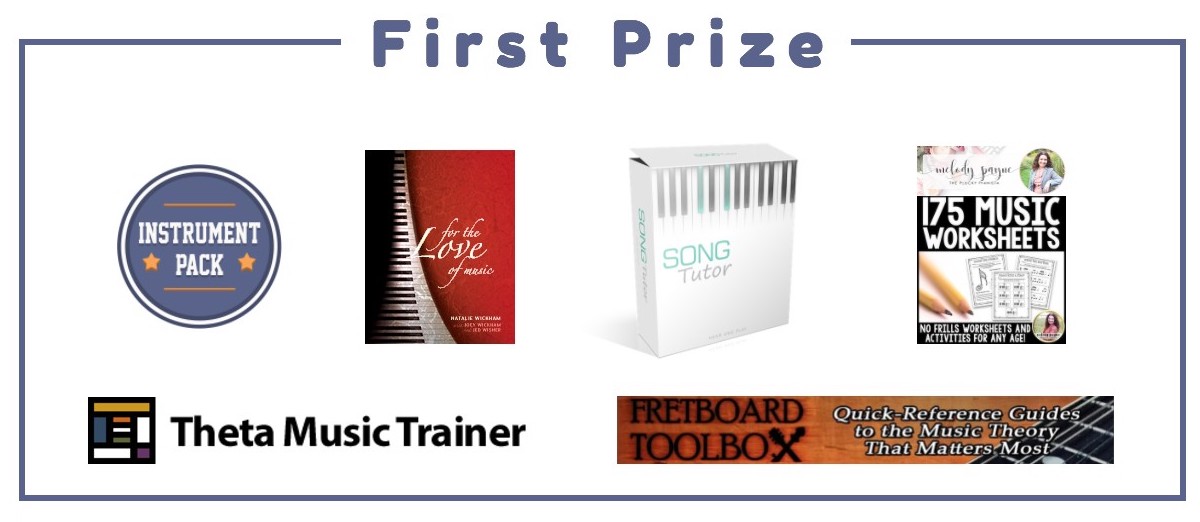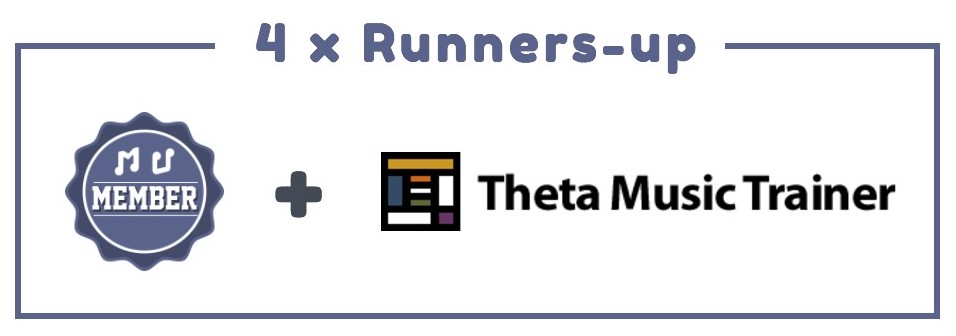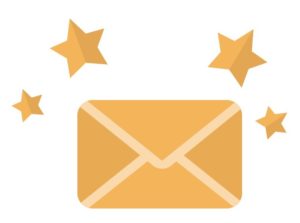Back in 2009 there really wasn’t much information online about ear training and developing your musicality. But one site which stood out then, and which continues to be among the top sites online for playing by ear was HearAndPlay.com.
On today’s interview we’re talking with Jermaine Griggs, who started Hear And Play back in 2000 and has had phenomenal success helping musicians around the world to learn to play music by ear. His success has led to him being a highly-sought after teacher and mentor in the entrepreneurial world, as well as a beloved teacher in the world of Gospel music – and even led to him being invited to the White House to meet President Obama.
Jermaine is a passionate educator with incredible insights into how learning to play by ear can be made simple and methodical – for anyone.
This conversation covers his own musical development and how he came to codify his methodology and launch HearAndPlay.com.
He shares what makes Gospel music unique, while also allowing it to be an amazing way to learn skills for all genres.
And there’s an inspiring example of one Hear And Play student who found great success despite a seemingly-huge personal limitation.
Jermaine also shares some nifty tips and tricks which you can apply right now to help you start playing by ear – as well as a bit of software that can make it dramatically easier.
Links and Resources
Enjoying The Musicality Podcast? Please support the show by rating and reviewing it!
Rate and Review!
Transcript
Christopher: Welcome to the show, Jermaine. Thank you for joining us today.
Jermaine: It is an honor to be here, Christopher. Thank you for having me.
Christopher: My pleasure. So I’d love to start at the beginning, if that’s alright, and here a bit about how you got started making music.
Jermaine: Absolutely. My grandma had this piano, right? And my grandma would play it. She has this gospel meets Ray Charles kind of style. Being a little six, seven year old, I got the pots and pans out because I thought I wanted to be a drummer. You know, a little boy banging on stuff. So I would accompany her and we had a little two piece band. She on the upright piano, me on the pots and pans, until one day around the age of eight, I hopped on the piano and I noticed my knack for hearing music.
You’re an instructor, Chris, and you know if you play every other white note with three fingers you’re gonna come up with some kinda diatonic chord. Something’s gonna sound good, you’re either gonna be playing major, what did you have? You had probably like a three in seven chance of playing a major chord. I’ve never thought of it like that way but yeah, you could play a C major, you could play an F major, or a G major as an eight year old if you just randomly played every other finger, and that’s what I did.
I could have hit a D minor, E minor, or A minor. I don’t know what I hit, but it sounded good. And I started mixing chords up. And sooner than later I was playing my first Disney song, I think it was called Under The Sea. And my sister would sing, she’s three years my junior, and we kind of started our own band. And that was my introduction to the piano, literally teaching myself. Because ’til this day my grandma can’t tell you the notes of the piano. She’ll be like, “This is an F flat,” I know she doesn’t mean it but it’s just her talking. ‘Til this day she doesn’t know the notes, I taught myself.
Christopher: That’s incredible. And was it literally just a matter of sitting down as an eight year old and hitting notes until you hit something that sounded good? Or did you have some kind of understanding of what you were aiming for? How did that work for you?
Jermaine: No, if I go back 30 years, without revealing my age, to that fateful day … I got the idea, my grandma was playing sort of every other finger or she skipped certain things. Visually, I could kind of tell that she was doing it. So I said, “Let me try it.” So that’s kind of how I approached it. That Disney song came on and I hit the major chord, I said, “Wow, that sounds like that.” So if anything, I probably had an acute ability to hear. I have a proclivity to that, but no, no traditional education. In fact, I would later join the school band and play clarinet but during breaks I would hop on the piano. Everybody would be amazed that I could play what our band just played by listening.
Christopher: Amazing. And how did things develop from there?
Jermaine: Right, so church, for me, was a really big catalyst, you know? You put a ten year old in a charismatic church, my church was one that it didn’t go by the program, it was like whatever ensued. So I got this ability to really, literally have to improvise. People go train for that, and practice for that, that was every Sunday for me. I would learn the songs that the choir director wanted me to learn on tape, I’d rewind the tap, I’d pick out the chords. But what I was able to do at any early age is understand the feeling that the chords gave me.
So it didn’t take a teacher for me to know that major was happy, and airy, and kinda gumpy, like the ice cream truck. (singing) Like I heard that. And then for me minor was solemn, and sad, and serious, and somber. And then later in church, you gotta play dominant chords in a charismatic church. And this was even before I realized I was playing them, but I knew if I took that C major and I add a B flat to it now we’re talking (singing), you know? We’re getting bluesy with it. And that’s what gospel is, it’s a lot of blues infused in there.
And so I learned that. I knew that that was the feeling. So if in church Sister Murphy got up and she sang a really sort of traditional, what we call a bluesy, church, what do they call it? A shuffle. To me, those were the bluesy chords, even before I knew what to call them. Worship music was the sadder, although it’s not as sad but it’s more serious. Those are the minor chords I was playing. So for me it was just feeling an emotion and I knew which chords to use, or at least try in my practice, to deliver that.
Christopher: That’s fascinating. And I know a lot of our listeners, and certainly a lot of our members of Musical U have felt very intimidated by that kind of situation, because they don’t know how to improvise, or they think they don’t know. So that idea of standing up on the church stage, or even just getting together with friends and jamming is super intimidating to them. For you it sounds like that just all came smoothly. Did you ever have any kind of performance anxiety, or did you feel bad if you were playing the wrong notes, or was it all easy because you were young and your church was welcoming?
Jermaine: Right. So for me looking back it was backwards, a lot of people practice, practice by themselves and then there’s this big reveal one day. You know, this big, what do you call them in your world? Recital, you know. For me, it was like I knew enough, I knew a little bit. “Hey, young man, come play for our youth choir.” And so first I learned what I needed to learn but then came the opportunity to play for the church service, which meant you could never really prepare. Because someone would stand up and sing Amazing Grace and then the next person might stand up and singing Leaning On the Everlasting Arms, and I just had to follow.
So for me at a young age, I also, so in addition to feeling, to me, let’s say that’s the first layer. Just certain things give you certain feelings and just learned to attach. I think people have a detachment to music when they practice and play it and learn it. There’s this detachment that I can’t fully describe. Sometimes I ask people I say, “Just throw the book away, right now. Just play this chord with me,” if I’m teaching my kid or my nephew.
What does that make you feel like? Forget about the major/minor intervals right now, perfect fits, what does that make you feel like? Okay now turn around, I’m gonna play either that chord or something else I need you to tell me whether you hear that or something else. I get serious but I also really want people to unlock that ability, because at a very basic level it’s not that hard. We can get really super advanced but hearing the difference between a major and a foreign chord, something that’s not major to me. Okay, we can do that. I can get an eight year to eventually be able to tell me that.
So I think it’s like what my mentor Tony Robbins says, “Where focus does energy flows.” So if I learn a piece and I never had that connection to feeling and what I really hear, then I think a part of me is gonna be trapped. That music blows away or something happens and I don’t know where I am. For me it was opposite. I learned that certain melody notes, if I start on the third tone of the scale that’s typically gonna be the major chord. The root of the key that I’m in is just gonna be inverted. I learned those kinds of things without knowing the technical aspect. I just knew that if I played that C major chord with E on top, well that would match the first melody note of Pass Me Not Oh Gentle Savior.
So I learned these little, if somebody sung a song that I didn’t know but the melody was familiar to me, I could still follow. And it was these little tricks that made me perfect to be the guy online, one of the first guys to say, “I can teach you how to listen to music” at the turn of the millennium. Because I had already sort of made all of my little tips and tricks and things as a kid to figure this out in live situations.
Christopher: Absolutely and one thing I really love about the Hear and Play approach and that I’ve always admired in the way you teach is there’s quite a lot of people out there that can play by ear kind of naturally, without having given it a lot of thought. But you, even though it did come naturally or at least came smoothly to you, you’ve taken a very thoughtful approach to it. You may not have studied classical theory in order to understand it, you’ve understood it by ear, you still ended up with the same kind of rules and very methodical understanding of what makes playing by ear possible. And that really comes through in your teaching and the way you’re able to explain it to other people.
Jermaine: Well thank you, I did have to go backwards like I said okay, well if I’m gonna do this for real, this is the year 2000, okay let me go backwards and figure out what I’m doing. And there was like this one or two year period where I said, “Wow, that was dominant ninth chord? I’ve been doing that forever. I’ve been doing that for 12 years.” So there was this one, two year period around the time when I was about 18, 19 creating my book, The Secrets to Playing Piano By Ear, where I really did go in there. It wasn’t just, “play this chord, play that chord,” which a lot of play by ear sites will do.
Sometimes if I bring in a really advanced musician that’s not classically trained, they will honestly be like, “play this chord, play that” and I’ll be like what kind of chord? It’s got a major, a minor, it’s got everything it’s so dissonant. And we can’t even up with the title of it, it’s so advanced. So we still succumb to that but in this period I really wanted to understand why I was doing what I was doing, because with that understanding I then could go beyond myself.
I could have some crazy system in my head making it all work, but that’s not gonna be enough if now I gotta teach this person over here, my daughter, my uncle. So now I need to systematize it for them. For example teaching somebody how to find the key of a song, part of that is something you can’t explain. Like humming the tonic, humming that root note, but what I found out is that people, if you’re tone deaf that’s one thing. But if you’re in the ballpark like I say, most people will either be humming the root, the third of the root, because they’ll hear that melody note, or the fifth of the root because they’ll also hear that melody note. All related to the same, let’s say C major chord on the root, but they’re not able to hear what’s the real root, but they’re hearing the third.
So then I came up with the minor chord trick. And I was like okay, well if you’re humming the third just pick the chord that puts the third, that note on top, pick the minor chord in root position that puts that note on top. So say you should be humming C but instead you’re thinking the key is E and you’re trying to listen to this. Well, what minor chord puts E on top? Well, A minor. And I just had this reference chart. I said basically, “Okay, test those other notes of the A minor chord.” So if you’re humming E and you say, okay the other two notes to test are A and C, cause those are the other notes. Well the minute you test C, “Wow, that sounds like the root.” And then you test A and that wouldn’t work, but C would work.
So what it did was it gave them, if they were accidentally humming the third it delivered the root to them. And think about if E was the fifth, or they were humming G accidentally, right? And they did the minor chord trick that would deliver them to C as well because C minor would be the root chord to test again. So it sounds advanced but when I put it in the reference and I explain it people are like, “Whoa. I tried your minor chord trick and it helped to deliver the root on three of the seven examples that you gave.”
So I just came up with unorthodox things like that. Teaching people how to play the major scales a teacher could say, “whole step, whole step, half step, whole step, whole step, whole step, half step.” I say, “Why won’t he wear white when hot?” My wife told me, “It’s hot outside, why aren’t you wearing white?” And I said, “Why won’t he wear white when hot?” I said, “That’s how you remember the whole step, half step. And people 20 years later are coming up to me, “Man, why won’t he wear white when hot? That’s how I learned my major scales.”
Minor scales, I say you don’t need to learn your minor scales if you know your major and you know your minor. So you know your C major, just go to the sixth tone and play the same exact notes from the sixth to the sixth. So if you know C major is all white notes, go to the sixth, it’s A. Play A, play the C major scale from A to A, bam, you got an A minor scale. So it’s things that the classical world would be like, sometimes they might cringe and that’s why I keep the worlds separate. But I acknowledge and I really wished that I had learned sheet music at an early age. I think it’s too late for me now. But at the same time-
Christopher: I think you’ve found the perfect balance. I particularly wanted to ask you on this conversation how you had managed to take this skill that comes so smoothly to you and translate it into something that works so effectively for teaching other people. And what you just said, that you did methodically take the time to think through how you were doing it, and think through how to explain it to others before you put your product out there, your book, and then the HearandPlay.com site. It makes perfect sense and I think it’s such an elegant solution to still go ear first, but give people the actual intellectual understanding also, and the practical tips and tricks they need to actually improve quickly.
Jermaine: Absolutely, yep. That’s exactly what happened.
Christopher: So we raced through the story a little bit there and I’d love to just circle back and explain a little bit how you managed to go from playing in church, just yourself, through to creating your first product to explain it to other people, and eventually starting … I say eventually, it was super early days in the internet. The turn of the millennium to start a learn by ear site in 2000, 2002, it was very early days. Tell us what was it made you go so big.
Jermaine: Right. Well, so let’s go back to 1995. 1995, no, no, 1998. ’95 I’m playing in the church. By ’98 parents are asking me to teach their kids. So I’m developing sort of this local business. I’m 15 at the time. But my grandpa, I’m also a young minister in the church so I have a leadership role. You could tell I got the knack for talking, I could go all day with you, Chris.
So parents are asking me to teach their kids, I’m this business guy. I don’t know, that’s a whole other story from a whole other world of mine. I’m this guy business guy selling Avon products at 12, so it’s not related to music but it’s related to the entrepreneurial bug. So when you think about this young kid that’s just got this nagging, I grew up poor and there was reasons for wanting economic success. And then I got this religious background and this music, I think it all comes to the head when I could take this knack for selling stuff like Avon, and I could match that with my knack for playing music, and so I started Hear and Play music way before I discovered the internet. I
t was just called Hear and Play Music and I’d show up to your house, I’d teach your 10 year old son or daughter, 12 year old, I had about seven students at 15 and after school my grandma would just drop me off at their house. The launch of the tools I would eventually start selling started when I said, “Huh, I’m teaching them all the same thing. I should come up with my own little workbooks. And for me, I turned playing by ear, I simplified it into note create scales, scales create chords, chords create progressions or patterns, and patterns create songs. So I made this five part sort of series and each one of those things became a workbook.
So let me teach you your notes and how they work, let me teach you how to form them into scales, why won’t he wear white when hot. And then let me show you how to take those scales and pick out the chords you’ll need. And then let me show you how to put those chords into patterns. And so that’s what I began to teach kids. Then the songs that they would learn were obviously church hymns that I knew very well. And we’d all combine it, like Amazing Grace, you could play that with three chords out of the key.
So from there someone said, “Jermaine, you should put your stuff on the internet.” I said, “The internet?” I had AOL 2.0, I was just in chat rooms at that time, what did we do on AOL 2.0? Like message our buddies from class and chat rooms. I never thought to start a website. So about two years later, the year was 2000, August 6th I registered the domain name HearandPlay.com, it was available. And the rest was history. I had to learn how to create a website, I had to learn how to market it. I actually started selling those five books in the year 2000. I didn’t have the 300 page course, The Secrets to Playing Piano by Ear, that’s where you get the date 2002 from. This was just the same five books from two years back that I was teaching the kids with. And I probably sold some 300 copies of that before I, yeah probably 300 in that first year as a sort of 17 year old, even before I got serious with it.
Christopher: I think it’s incredible and as any of our listeners would know, websites come and go, and something that’s hot for a few years tends to not be after that. And I remember back when I started my company in 2009, Hear and Play was one of, if not the top site for playing by ear. I think it’s remarkable that that is still the case. If you go out there looking for info, particularly in the world of Gospel, your site is out there. It’s helping people, it’s helped millions of musicians now learn to play by ear. I’d love to talk a little bit about what you’re offering there and how you’re helping people follow this kind of methodology that we’ve talked about.
Jermaine: Absolutely. So around 2003 I came out with my first DVD and it was Gospel. I don’t know how I attracted Gospel people, because the first book never said really Gospel although it did have hymns at the end. But I didn’t market it as a Gospel course at all. I don’t know. The universe works in mysterious ways. So I had this Gospel following somehow. So my first video, the first time you could see me in video was Gospel Keys 101 and I was teaching people how to play hymns.
It was a three step process, determine the melody and I taught them about neighboring tones, upper, lower, passing tones, here’s how you know if it’s a chord tone or if it’s just passing. Step two was harmonizing melodies and then step three was adding the bass, like common bass and stuff like that. That was the process. And that would send us along the lines of creating a Gospel Keys 200 and a Gospel Keys 300 until I said why don’t we make a Gospel music training center? The Gospel Music Training Center. And we could release lessons every week, they wouldn’t be on DVD, you could log in and you could learn. We have a beginning version of the lesson and advanced version, and we’d give them the midi file. We’d even take the midi file, turn it into sheet music. But we put a disclaimer like I don’t know if this stuff is correct. It’d have all these accidentals in it and stuff ’cause we weren’t set in the key signature as I look back. But that was it.
And because it was a niche that’s underserved, see that’s the thing. If anybody’s looking for advice and they’re a music teacher and things like that and they want to fit into some mold, see I never said I had to fit into a mold. I never said, “Well I have to be classically trained or go to a conservatory or have a degree.” I just said, “Who’s out there that needs me like me? And who can I serve?” And what came to mind is my Gospel folks. To this day I don’t know, I would have to Google it, but I don’t know if you could go get a degree in worship music. Or like could you make that your study, your field of focus, or even just church music in general. I don’t know if that really exists.
But in our world you can come to the Gospel Music Training Center and we’ll take you down a path of traditional, hymns, worship, urban, neo soul, even Latin. The thing about church music is that the gospel is just it’s a message but the genre actually changes. Like Martha Munizzi would do Latin music and then this singer will come in and do neo soul. Where if you just listen to the music you’d be like that sounds like secular music. So Gospel actually lends itself to all the genres, depending on the artist and what they’re inspired to make. So it’s really not just a Gospel platform. I think it’s a music platform but it certainly has a Gospel message.
Christopher: That’s so interesting and that’s something I really wanted to ask you about because … There are so many different listening skills a musician can develop, and it can be a bit overwhelming. And I think people who come to a course like yours that says, “We will teach you how to play Gospel music by ear,” that’s very clear and they know that’s what they want to do.
I really wanted to ask you, is it framed like that because musicians need to learn these general listening skills and they love Gospel therefore you’ll teach them through Gospel? Or is it that Gospel music has particular listening skills that they need to develop and you need a particular course to explain that?
Jermaine: Right. I think Gospel is unique and then in another way it’s not unique, when you compare it to other genres. Like I said, Gospel borrows and influences everything. I could put a blues song from the ’50s against a Gospel song from the ’80s and they would follow the same. You know Ray Charles sings (singing) I’m not a singer, I hate when I sign and then I have to say I’m not a singer. Then there’s a song in the Gospel world by a group called Mary Mary and their song I think is called Yesterday or something. And it’s the same patterns, starts on a one then it goes to that bluesy three. The dominant on the three and then the six to the five to the four, the bluesy four, to the flat five or whatever.
So we just make that comparison. So I think you could take blues or some jazzy songs in our Gospel music training, there’s Latin. But to survive as a church musician there are some specific skills, and you have to listen to for it. So we just did a lesson and if you’re playing traditional praise Gospel it’d be dominant. You would never have a reason to ever play a major seventh chord in this subgenre. If I say traditional praise, it’s a hand clapper, you’re never gonna hear a major seven ever. So I tell the listener just eliminate that. Now I’m not saying fully, but if you want to save your time in picking out chords, just eliminate the major seven when you hear a hand clapping, foot stomping, traditional praise song in the church.
And I would slap them upside the head, I get really passionate, I say, “So what are your pool of chords that we’re pulling from here?” And if they say major seven, I say, “Well that’s not the feeling. The feeling is bluesy, dominant.” So you can definitely, there are certain sub genres in the church. Now if I say worship, worship wouldn’t exclude dominant chords because passing to the four, the dominant chord will sound nice and even pretty. You could take a root and you could lower it to the major seven and then you can lower it to the dominant seven, and that will prepare you to move to the four, to the fourth, upper four. And so I won’t seclude it but I’ll say most worship, though, will just have nice major chords, and triads, and you may add a nine to it. See a difference with adding the nine? But sometimes you just want it natural and raw and you’ll not add the nine.
I just try to get people to hear the differences between the emotions evoked, the subgenre that will lend themselves to certain chord classes, and then from there teach them the patterns that work. Like praise music, I broke that into five parts. I said here’s part one, here’s part two. Some songs have both parts, some songs don’t have both parts. I showed them the differences. Another example would be in church, hymns. Hymns to me are melody driven. They were originally written, from my understanding, to just be sung vocally like a choir. So they’re gonna be in basic three part harmony. So even if I knew the melody but I couldn’t hear the chords, I’ve never heard the chords before, and I hear that the soprano is going from E, D, C, well I can pretty much without ever hearing that song or the whole choir, I can pretty much come up with what I think the alto and probably what the tenor is doing by three part harmony. So that’s a whole other sort of technique I teach with hymns.
So Gospel, I think it answers your question both ways. I think because they like Gospel and their identity is a gospel musician, it helps to just have a fully focused training center for Gospel music. But I also think Gospel can just be a tool to teach anybody music. Because I think it lends itself to the same lessons, the same sort of theory and techniques that any other genre would.
Christopher: Fascinating. So would it be fair to say the majority of musicians who learn with Hear and Play are Gospel musicians?
Jermaine: I’d say it’s majority our share. The last time I surveyed I think we’re 60% Gospel. I think the name is a misnomer. It could be like Hear and Play Gospel. We’ve always had this desire to go outside of Gospel, like everybody.
Christopher: You also have a pretty fully fledged jazz curriculum, right?
Jermaine: We do, we do. And that’d be like another 20% of people will get into our jazz with my good friend James Ruble, and so we’ll have 20% there. But if someone said you could only pick one genre and you had to ditch everything else, well, it’d probably be Gospel. But just in in movies, certain people might start in one genre and then they want to cross over. Or music, music you may start in R&B but you get this feeling, “Is that R&B singer trying to crossover into pop? Like mainstream mainstream?” And that’s the sense that I feel like we battle with. Do we want to be just Learn Music By Ear, Learn Anything By Ear, and some of our courses lend themselves to that, but it’s definitely not the dominant. I think a lot of people see us as Gospel.
And rightfully so. Maybe that’s why we’ve been here so long because we stuck with what we’ve known and we have a core base. And when you have a core base of anything … I heard somebody say if you have 1,000 people that love you for anything, you’ll do okay. 10,000? Oh, you’ll do really okay. 100,000? That’s why a star like these celebrities from the ’80s are still touring, because they have their base. And they never need to go take another job or something like that because, I mean it may not be Beyonce kind of money but if you’ve got your base from the ’80s … I have a client in my other business from Chicago, they still tour. They tour several, several years later, decades later, because of that base. And I think that’s similar with us. We have our base and we know who they are. Pursuits of trying to go beyond that base have worked, but it still brings us back to that base.
Christopher: That’s interesting. And fascinating how that Gospel base, for the musicians who study it, it becomes a vehicle for almost any other genre and the skills they’ve developed at Hear and Play can be developed in any direction they want to go after that.
Jermaine: Absolutely. Chris have you seen a Gospel player at NAMM or something or seen a video on YouTube and just see how crazy they are?
Christopher: Mm.
Jermaine: It’s the same way with singers like Beyonce, or just anything, Aretha Franklin, they all have their base, a lot of them, more often than not, in church. It’s something about church and even on the musician side because you have to develop so many things that then when you put us into the real world, we may have to unlearn some things, but you put us into the outside world, people tend to be amazed. More amazed than the other way around, from what I’ve seen.
Christopher: There’s a remarkable number of incredible musicians who have that church background.
Jermaine: Mm-hmm (affirmative). It’s crazy.
Christopher: You know one of my favorites, Wyclef, grew up in church music and all of his music is influence by that Gospel beginning.
Jermaine: Wow.
Christopher: And over the years you’ve certainly helped a lot more than 1,000 true fans. You’ve helped hundreds of thousands, millions of people, over the … Where are we now? Nearly two decades Hear and Play has been running. Are there any that stand out to you as a student you’re particularly proud of or a learning experience where you looked at it and you were like, “Yes, that is what we’re trying to do with Hear and Play?”
Jermaine: Right. I mean there’s been so many over the years and one particular guy that I remember him coming to us in 2003 when I was picking up the phone myself like, “HearandPlay.com, how can I help you? This is Jay.” “Oh knock it off, this is Jermaine.” “Well Jay is my nickname, I’m trying to avoid my cover being blown,” because I know they’ll want to talk to me for a long time so I used to say, “This is Jay,” which is my nickname.
And Adrian called one day and he said, “I’m legally blind, I’m blind, visually impaired and so I can’t really do your book, it’s not in braille or anything like that either.” I said, “Well, I have a DVD coming out and this is gonna be perfect for you.” And then I’ve always been one that did it slow, I even tell my advanced musicians that come in, I say, “Don’t just point to the key, I need you to say the key three times, say what it is, say the interval, say any harmonic equivalents.”
So I’ve always been that where if you turn off the DVD you could still listen. And it served me well with this particular student, Adrian Stewart. Who took a liking to my DVDs and over time bought everything that we had. I mean rabid fan, customer, and friend. Years later, this guy he sent a YouTube video to us. I mean he’s playing in rhythm, playing in time, soloing, and it just did my heart very well when I saw that. And he continues to update us over the years. Anything new, I even tell him, I call him, “Adrian, you don’t even need our stuff now.” He says, “But Hear and Play was my start and anything you guys release, I buy it on principle. I give it to my nephews and my nieces.”
And so Adrian comes to mind. And if you think about it, I don’t know who else could have served Adrian in that way. He had his Gospel affinity, he didn’t read sheet music or sight reading, and God knows, I don’t know how it works in that world, you can educate me on that. So I think Hear and Play came at a time that, if I could epitomize the student, well yeah it’s somebody who … Well he’s an outlier but he couldn’t see it, he couldn’t see and play it, it was no see and play, it had to be hear and play. And so yeah, Hear and Play for Adrian worked out and Hear and Play for like, you said, thousands of others, worked out because either sheet music didn’t work for them in the church or they didn’t go down that path. Or some people they just wake up and they just want to play a couple chords and you say well, we gotcha there as well.
It’s this thing and some people say well you should always be classically trained. And I say if you have the opportunity, you’re my kids, sure take them down that path. Your 50 years old? I’m telling you that’s why they come to me. You’re 50 years old, you just want to play. So yeah, that’s probably who would come to mind.
Christopher: That’s such an inspiring example, I love that. So I’d like to be a little bit selfish for a moment and ask you, if I may, about your own children. I have an 18 month old daughter and I’m starting to think about how to raise her musically, and how to make sure she grows up loving music, and feeling natural with music. I know you and your wife, Sarah, have three children, Jadyn, Layla, and Brendan. I’d love to know how have you approached their music education?
Jermaine: Absolutely. So my youngest, Brendan, I just I would say it now, he’s gotta be doing something in music, he’s six now, when he’s our age. I mean he loves music. When he was two years old, he also has an affinity to write letters, like recognize letters and stuff so I see a good memory which helps for music. I see a good left brain. People think music is right brain but it’s left brain pattern recognition type of stuff. Chess players, musicians, I think there’s some correlation, pattern recognition.
And so he would type out names of songs in the iPad notes and I’d see a note, I’m like there’s 200 songs here. And that’s how he taught himself how to read. He taught himself how to read by writing out words from songs, album covers and stuff. So he absolutely loves music and his favorite song right now on the piano is Lean On Me. I took the same approach with him as I did my older daughter Jadyn.
I start off by teaching them the notes and I say, “Hey, can you point to the two black keys?” And they point to them. And I say, “Can you point to any other two black keys?” And they point to them. And I say, “Well the white key to the left of the two black keys, just right to the left is always gonna be C. Can you point to another C?” and I make it into a game. And then when they do it I do something, “You did it! Point to another C!” And I get them recognizing, “Okay so if that’s C,” then I teach them F.
And then I teach them how to do a C scale and I teach them the proper fingering and we stayed there for a little bit. And then I teach them how to number the scale. And then what I’ll do is I’ll play games with them, “Okay, point to the fourth tone of C” because I think people skip this part of it. I think if you have an intimate knowledge of the number system … Because when you’re playing by ear it’s not just this airy fairy telly thing. We still have a roadmap too. And if you want to communicate with other ear players you gotta be like, “Go to the four.” And if that’s not internalized you’re gonna have a hard time. It can’t be like, “Go to the bump bump chord.” It’s not the bump bump chord, it’s the four. So I want to teach them the numbers so now we can communicate because we don’t have sheet music, we don’t have that ramp, at least right now. I’m teaching them by ear.
So they get the numbers in their system then I teach them how to do the chords. Once we do the every other finger of the scale thing I think this unlocks it for them because then I can put on a Disney song or a Nickelodeon song. If the song happens to be in C, I’ll find a song that happens to be in C because even if it’s in F or A flat they’re not gonna make the relative connection to it. It has to be in C. If I find something that goes from C major, to G major, to A minor, to F major, which is what? 70% of pop songs that they’re listening to. Then I hook them because I don’t hook them on something they can’t relate to, which is a lot of kids if we’re honest, kids can’t often times relate. So you do have to hook them with something that they really listen to. So whatever it is.
I remember Justin Bieber had a song, “Baby, baby, baby.” And when I taught her that chord progression and she could play it and sing it, now we have her hooked. And I think that’s how you hook a kid. And it goes back to what I learned 20 years ago, notes create scales, scales create chords, chords create patterns, patterns create songs. And then if I find another song in C that has the same exact pattern and then all we have to do is change the lyrics, now they’re getting how Hear and Play really works. It’s the patterns, baby, it’s not the lyrics. They change the lyrics and the rhythms but they use the same underlying chords. And when they get that, now I have an ear player in the making.
Christopher: Amazing. I think that you probably just described the Hear and Play philosophy for any age of student as much as your own children. It’s really enlightening to hear you talk that through, thank you. So one thing I’ve always really admired about Hear and Play is that you are constantly innovating. I think you and I could have a whole set for an hour long discussion about the business of running a music education company.
But from a customer perspective or a musician’s perspective you guys are always coming out with exciting new courses or new products or new innovations about the way you serve musicians. One thing that really stood out to me in your new Song Tutor software. Could you tell us a little bit about that?
Jermaine: Absolutely. And I must say, I admire you too. I remember from our conversation, but you’re a programmer, right?
Christopher: Right.
Jermaine: Or either-
Christopher: I was a programmer by background.
Jermaine: Yeah, by background which makes sense to me. I’ve always told people that musicians, particularly ear musicians, and programming, I think it goes hand, I have proclivities to programming too. I can follow a little PHP and Java because I work with programmers but I’m like you know what, if I wasn’t a musician I could do this. You know? And you happen to have both of them which makes sense to me.
I’ve always said I want to be in software and I wanted to develop tools so I said what if we had a calculator to help people take things to other keys? So you could punch in your chord, you could say up one, that’s called instant transposing so we created that like years ago. But the latest invention that you’re talking about is Song Tutor and literally has a browser built in and the students can go search for any MIDI file, you could type like, “jazz solo MIDI” and you’ll come across thousands of pages of regular people that have put up their MIDI files. But you click it and it literally, a world opens up for you to pretty much manipulate that MIDI file. Slow it down to what I call turtle speed, you can highlight the notes, you can do split layers, you can loop certain parts of it. And then one thing that I noticed even other tools that existed didn’t have was the walkthrough feature.
Even I found if I wanted to really learn a solo from somebody and I had a MIDI file, even if I looped it and slowed it down it was still in motion. So the step feature just breaks up every little note. You can even arpeggiate it and have every little note of the chord broken up or you can group it by timing. To me that was a great skill, and I use it myself. Sometimes JP, in my company, he’s a way better musician than me. His musicality, like me I’m a business man split musician so my time is split. But he’s full on musician, like on tour with people. So I’ll sometimes ask JP, “Hey, can you through in some of your sweet chords here?” And all he has to do is make it a MIDI file, I open it in Song Tutor, and now I can have the mind of JP without having to bother him.
Same thing, we’ll have a musician from out of town, a famous musician come. “Hey, just play us something. But we’re recording MIDI, disclaimer.” We’ll record two hours of MIDI because all of us want inside of their mind but sitting behind them and things like that is not the best use of time. We got it in MIDI, we can unlock that in Song Tutor, go through every little chord. So Song Tutor is sort of like a, I think it’s the perfect thing, a classical musician wouldn’t get that excited about it because that’s what sheet music is. You literally do have access to the mind of Beethoven, the mind of Bach. And ear musician is only listening so when you bring that to a program like Song Tutor where it’s the equivalent of sheet music but it’s lit up and it just literal, and you can slow it down. It’s those worlds sort of colliding in a very little way.
Christopher: Yeah, that’s beautiful. And I love that because often what people struggle with with playing by ear is they know in theory how to do it and with very simple, slow examples they do fine. But then they hear a song and it moves so quickly they can’t get a handle on it. And I love that Song Tutor lets you kind of get a hold on it and dig in and kind of explore the song in that way. I also think it’s really impressive that you’ve designed something that isn’t just interactivity within say your Gospel Music Training Center, or just on HearandPlay.com. This is a tool where you can take any MIDI file, anything that inspires you, any genre, and you can do the same process to figure it out by ear.
Jermaine: Absolutely. I actually, it probably came because released MIDI files and then we would say go to vanBasco Karaoke which is a very, it’s been out for 20 years, but it’s very basic and the notes were really small. And I said if I could do that on steroids with all my extra looping and step features, it’d be awesome. So then we just eliminated having to tell people to go over there and we added four or five features to our idea and we released Song Tutor. And then we said well why don’t we just let the world in on this? Exactly like you said. It actually, no it was Hear and Play Song Learner in 2007 and then we re-did it from scratch because it didn’t work on Mac, only PC, we re-did as Song Tutor in the last two, three years and that’s what you’re seeing.
Christopher: Amazing. And that’s definitely something I’d encourage listeners to go check out if you’ve ever had that feeling that you could probably figure out a song by ear if it just didn’t move so quickly, definitely check out Song Tutor and see if that can help you decipher it.
Jermaine: Yes, sir.
Christopher: So you’ve been on an incredible journey developing one of the leading sites out there for playing by ear and you continue to innovate. I have to ask, what’s next for Hear and Play? Where do you take it from here?
Jermaine: Yeah so Hear and Play, interesting you mention that because I just had a conversation with one of my marketing guys. He works for me virtually, he’s in Silicon Valley and he’s always telling me of some of his colleagues. So-and-so just got investment capital to take things to the next level or start a business. I’ve always, since I’ve been grassroots I’ve been, what do you call it? Bootstrapped. I started with $70 as a 17 year old. I never wanted to share the company or this idea of an outsider or to have to answer to an investor.
But, lately, and I’m just talking out loud, I’ve been open to this idea of what if we really did bring that world to Hear and Play? And we didn’t just operate on our cashflow basis like we did but we actually had this investment pool to really make this thing, maybe it meant Song Tutor for every instrument, you know? It gave us the funding to do something like that. Maybe it meant Hear and Play TV, 24/7 programming. You could go to this online channel and there’d be a saxophone teacher on it 1:00 AM, there’d be an oboe teacher on or something.
And I’ve really been considering that because when you get to 17 years you’re like well what else? You don’t want to be like the child actor who did it so early that now they’re a little tired of it. So we have been looking at things like that. And even if we didn’t take investment money like that, still approaching things with that start-up mentality. They’re still pages that I haven’t updated from 2003. There’s a lot of complications from being the first at something as well. Because new players can come in an innovate and have a fresh look at what you haven’t been able to keep up with.
So there’s that aspect of it but I see us having something like 24/7 programming, I see us catering to different instruments. I see us having software capability for guitar, although it’s hard to figure out MIDI and guitar. There’s so many places to play the same darn chord. The piano’s just 1-C-3 or 1-C-7. But I see us getting into that. I see us one day I used to say having physical Hear and Play centers and they’d be in communities where I think it would apt to this style of learning and genre. So what about a Hear and Play center like the Yamaha, I think they have their own Suzuki centers or something like that. But it’d be all non-traditional, so it’d be like, “You could learn how to be a choir director here.” Or you could learn, it’d be like that.
So the sky’s the limit. And honestly we’ve done nothing with apps like you have, we’ve done nothing with iPad so bringing Song Tutor over there. There’s so much more that we can do. So while I’m so grateful that people applaud me for being out 17 years, I still got some reinvention as well that is necessary.
Christopher: I think it’s incredibly inspiring. There aren’t that many people who would play by ear and then take the next step and want to help other people play by ear. And there aren’t that many people who are helping other people play by ear and want to take the next step and turn it into a product and reach thousands or hundreds of thousands of people online. There certainty aren’t many people who do that and manage to sustain it online for 17 years and be leading the market for that long. And I think it’s awesome that after this time, and having had so much success, you are clearly still looking ten times the size and how can you be even better for the next 17 or 30 years. It’s incredibly inspiring. Thank you so much, Jermaine, for joining us today.
Jermaine: Hey, the pleasure has been mine. Thank you for having me.
The post How to Hear And Play, with Jermaine Griggs appeared first on Musical U.
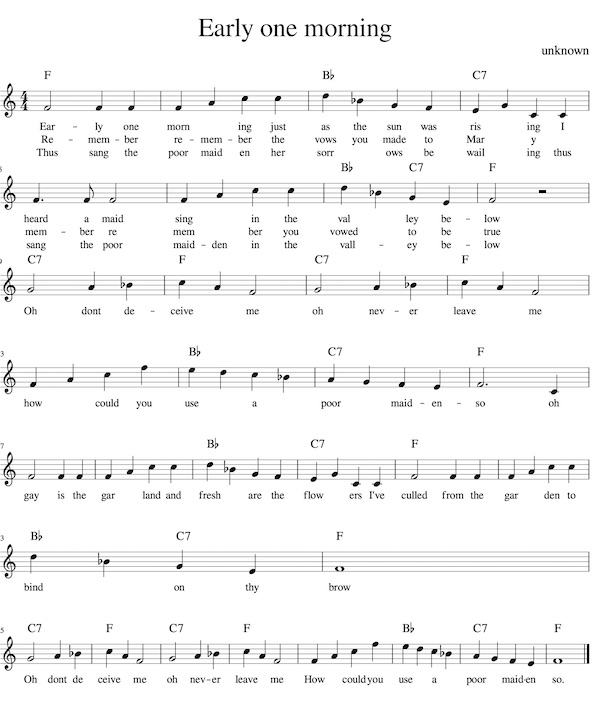
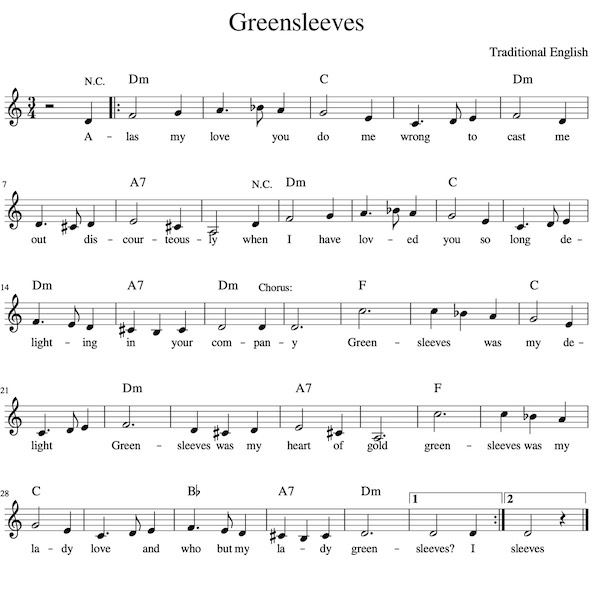
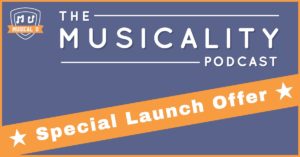
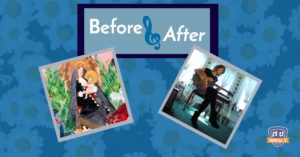
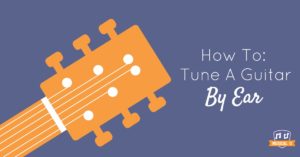
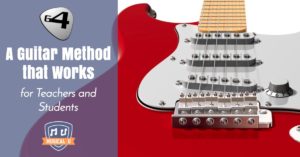
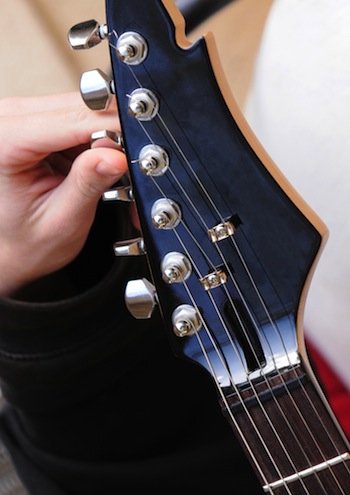 Learning how to tune a guitar
Learning how to tune a guitar 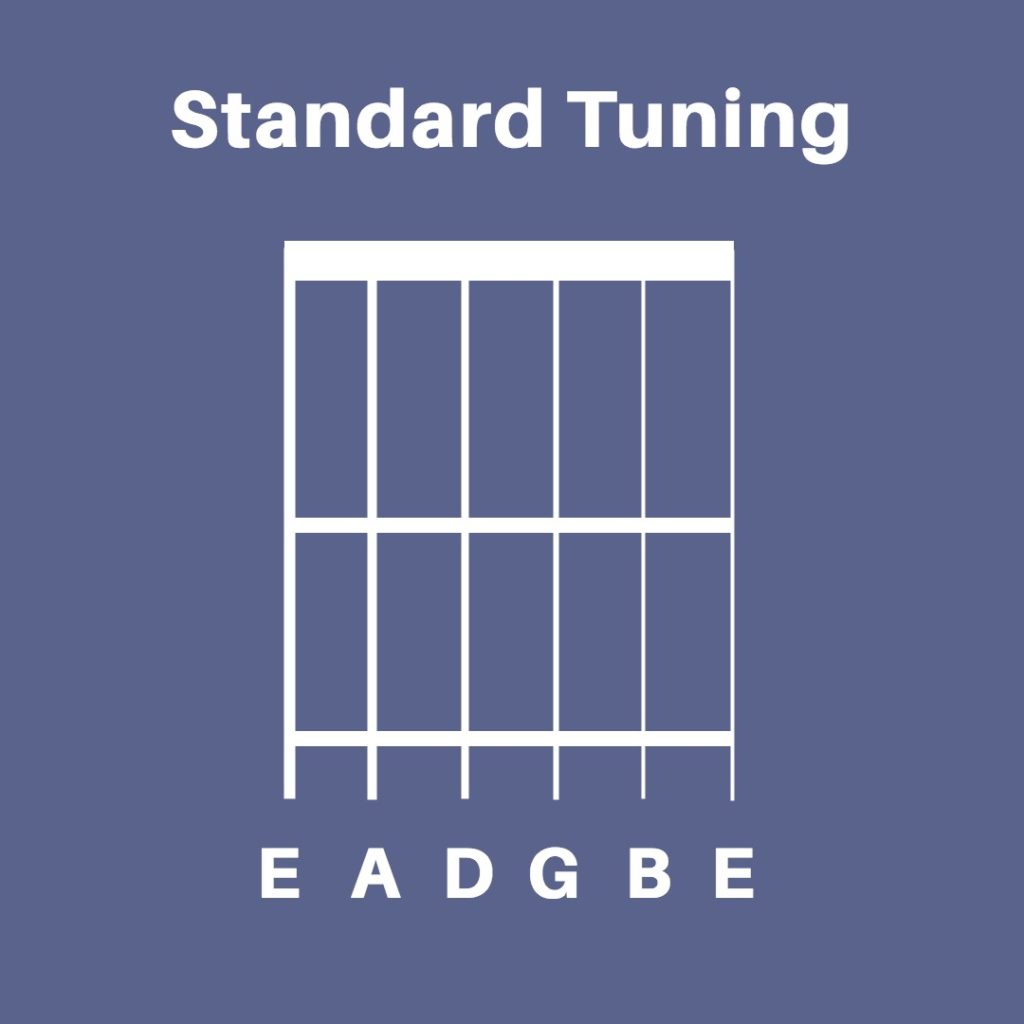 When you’re looking down at the six strings of your guitar, you’ll notice that the strings go from thickest to thinnest. The topmost thickest one is your low E string, also called the sixth string. Following that, the next thickest is A, or the fifth string, and so on, all the way to your first string (the high E). The pitch order of strings in standard tuning, from sixth string to first string, and therefore from lowest to highest, is EADGBE. We always tune in “reverse” order, starting with the sixth string, or low E, and continuing in order all the way to the first string, or high E.
When you’re looking down at the six strings of your guitar, you’ll notice that the strings go from thickest to thinnest. The topmost thickest one is your low E string, also called the sixth string. Following that, the next thickest is A, or the fifth string, and so on, all the way to your first string (the high E). The pitch order of strings in standard tuning, from sixth string to first string, and therefore from lowest to highest, is EADGBE. We always tune in “reverse” order, starting with the sixth string, or low E, and continuing in order all the way to the first string, or high E.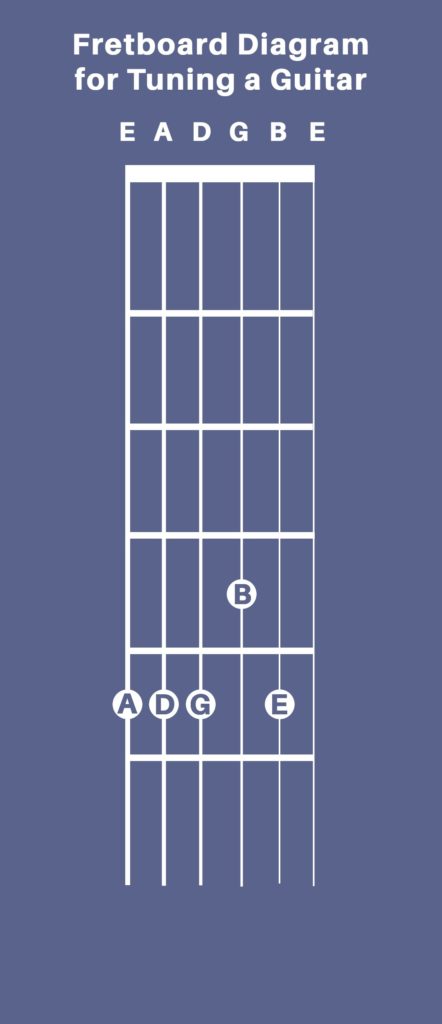 The note on the 5th fret of the A string you just tuned will be same as the open note of the D string you’ll tune next. Play the two strings in unison, by placing your finger of 5th fret of the fifth string and ringing the open note of the fourth string. Listen for whether the two notes are the same, in close discord, or have a noticeable gap in pitch. Adjust your tuning peg until you hear they are perfectly tuned.
The note on the 5th fret of the A string you just tuned will be same as the open note of the D string you’ll tune next. Play the two strings in unison, by placing your finger of 5th fret of the fifth string and ringing the open note of the fourth string. Listen for whether the two notes are the same, in close discord, or have a noticeable gap in pitch. Adjust your tuning peg until you hear they are perfectly tuned.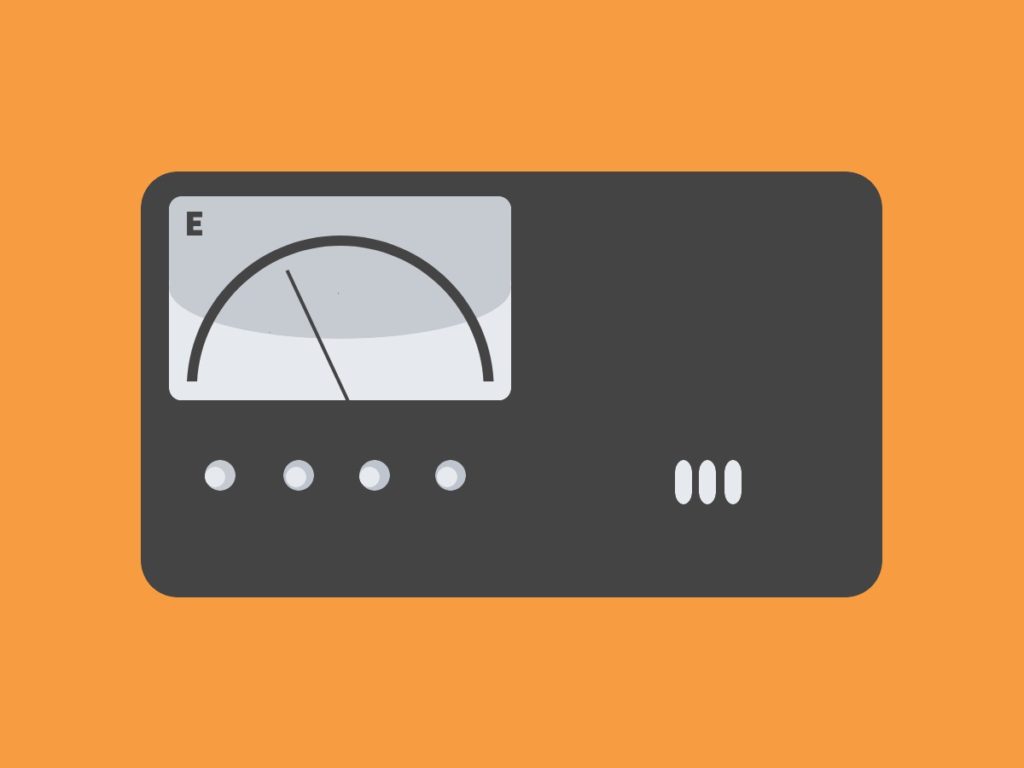 A standard tuner is a rectangular, “box-shape” tuner that tells you if and by how much your note is off-pitch from standard tuning. It can be used with both electric and acoustic guitars; the built-in microphone picks up on the pitch you are playing, or you can use the tuner’s input jack for a more precise reading for electric or electroacoustic guitars.
A standard tuner is a rectangular, “box-shape” tuner that tells you if and by how much your note is off-pitch from standard tuning. It can be used with both electric and acoustic guitars; the built-in microphone picks up on the pitch you are playing, or you can use the tuner’s input jack for a more precise reading for electric or electroacoustic guitars.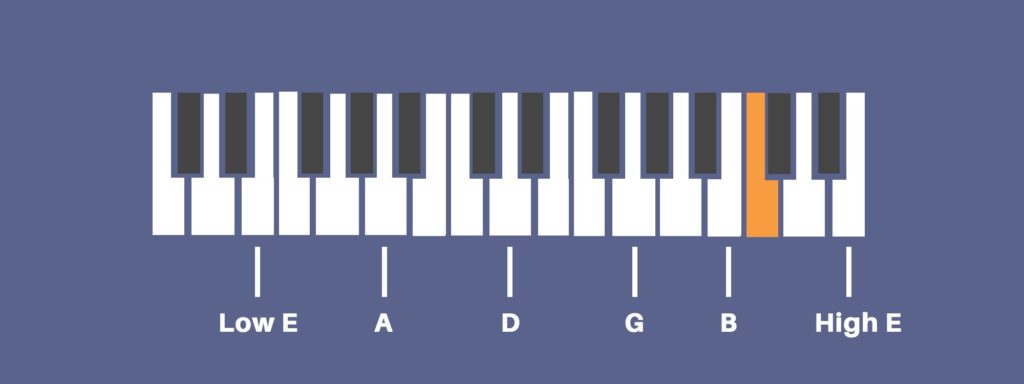
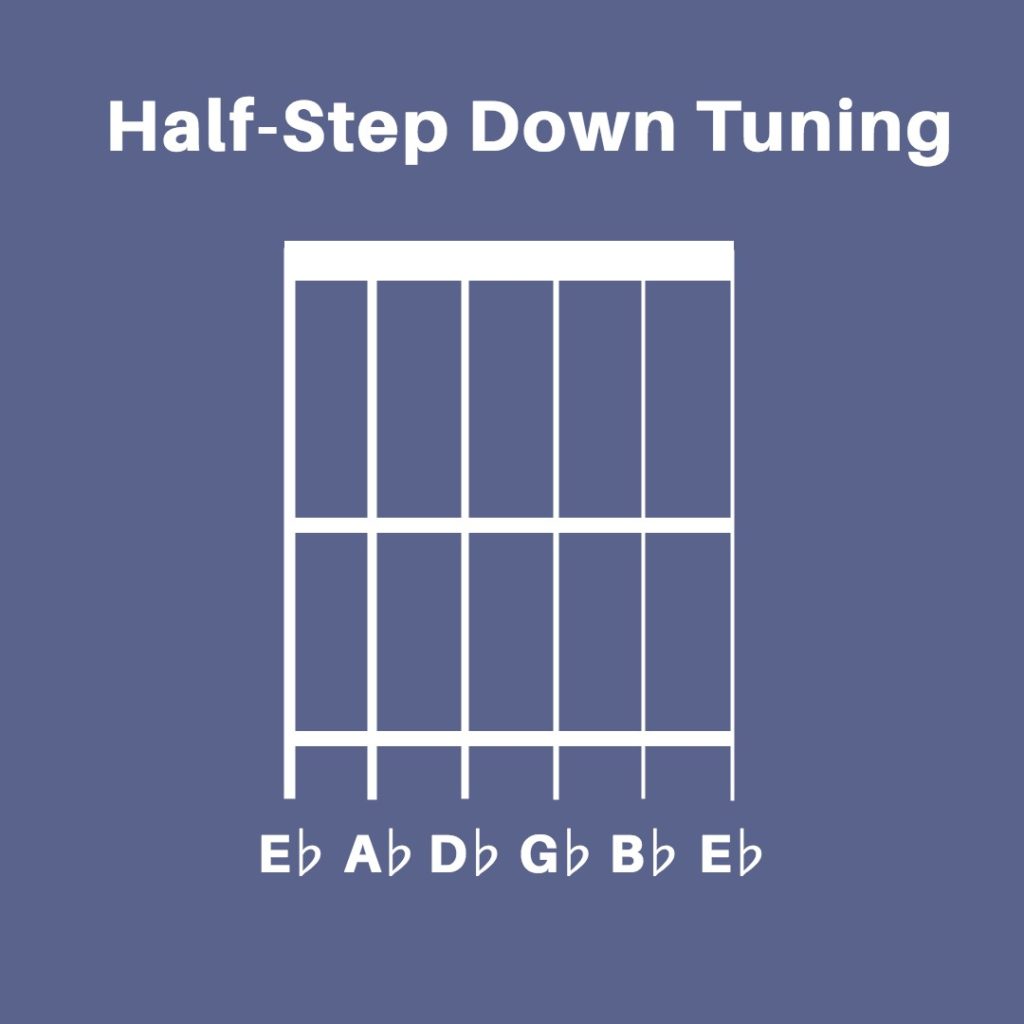
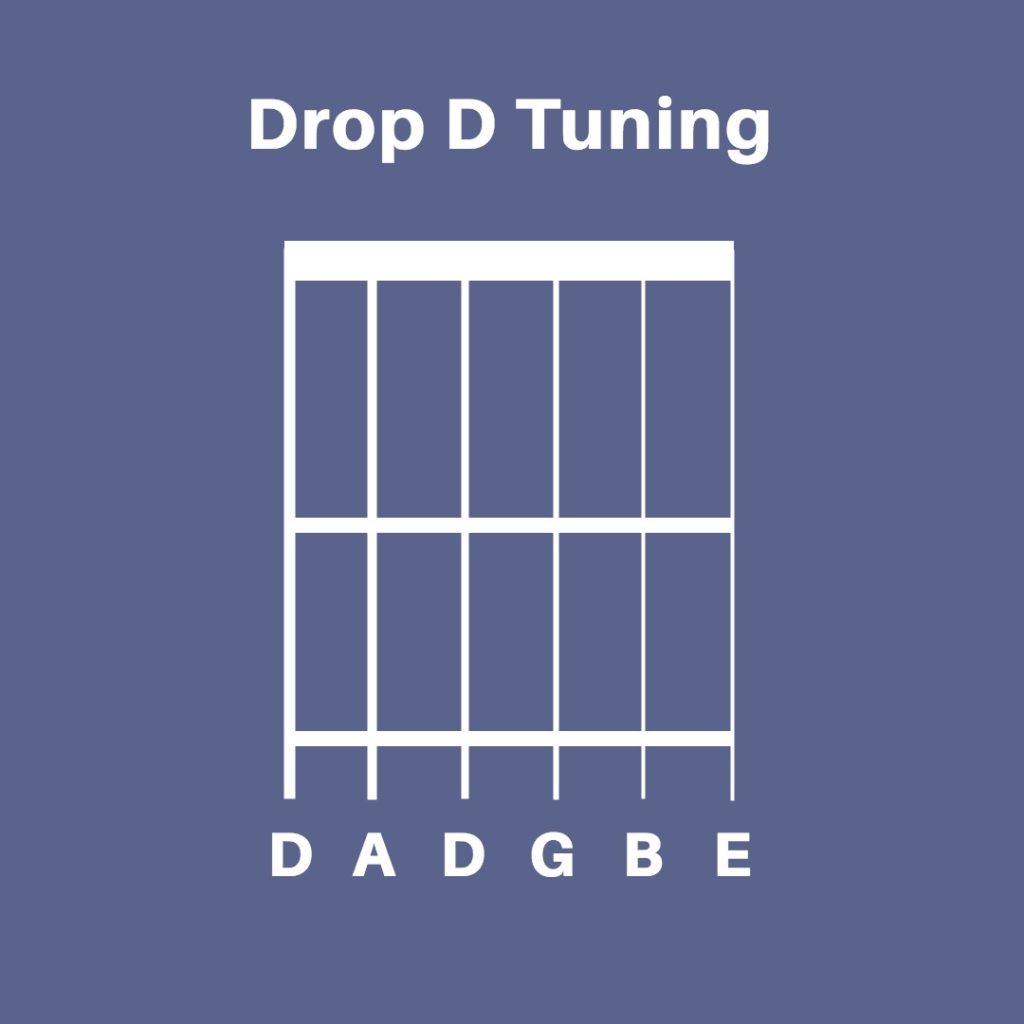
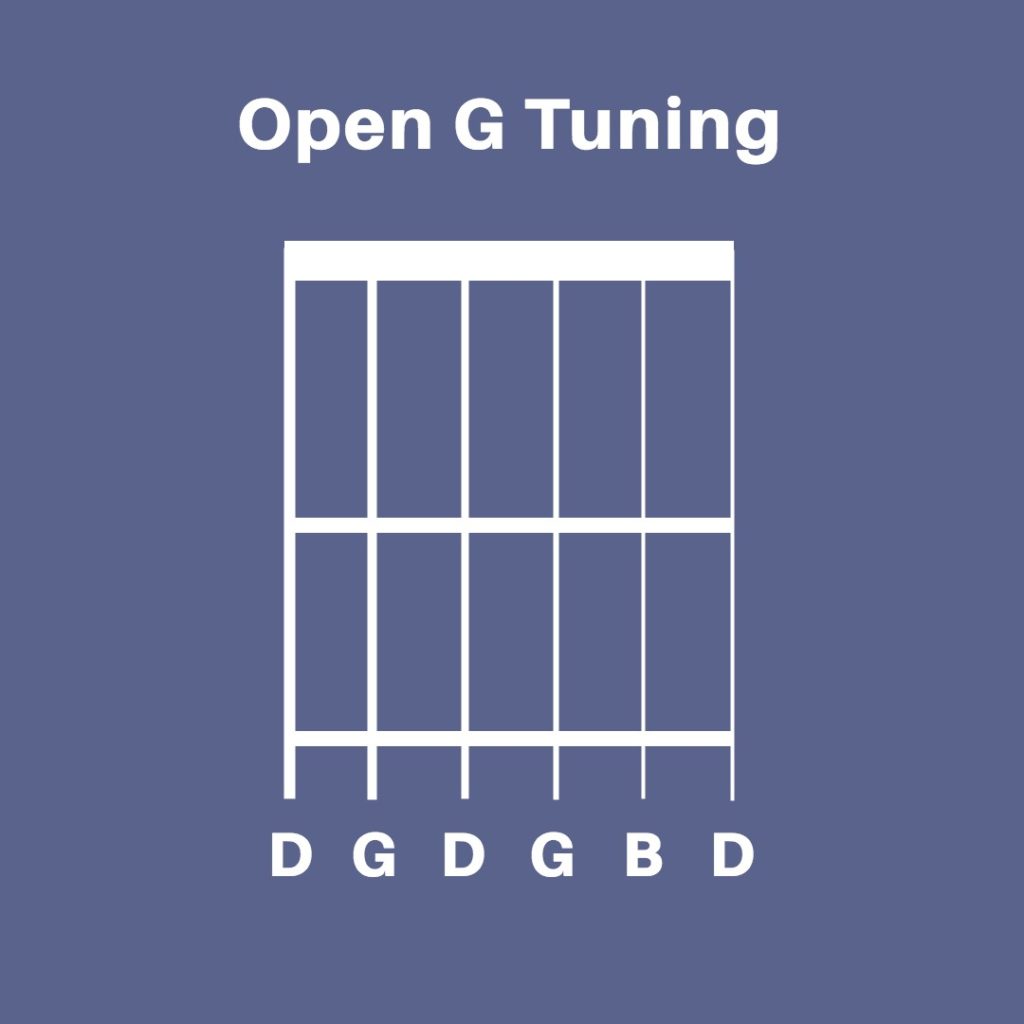
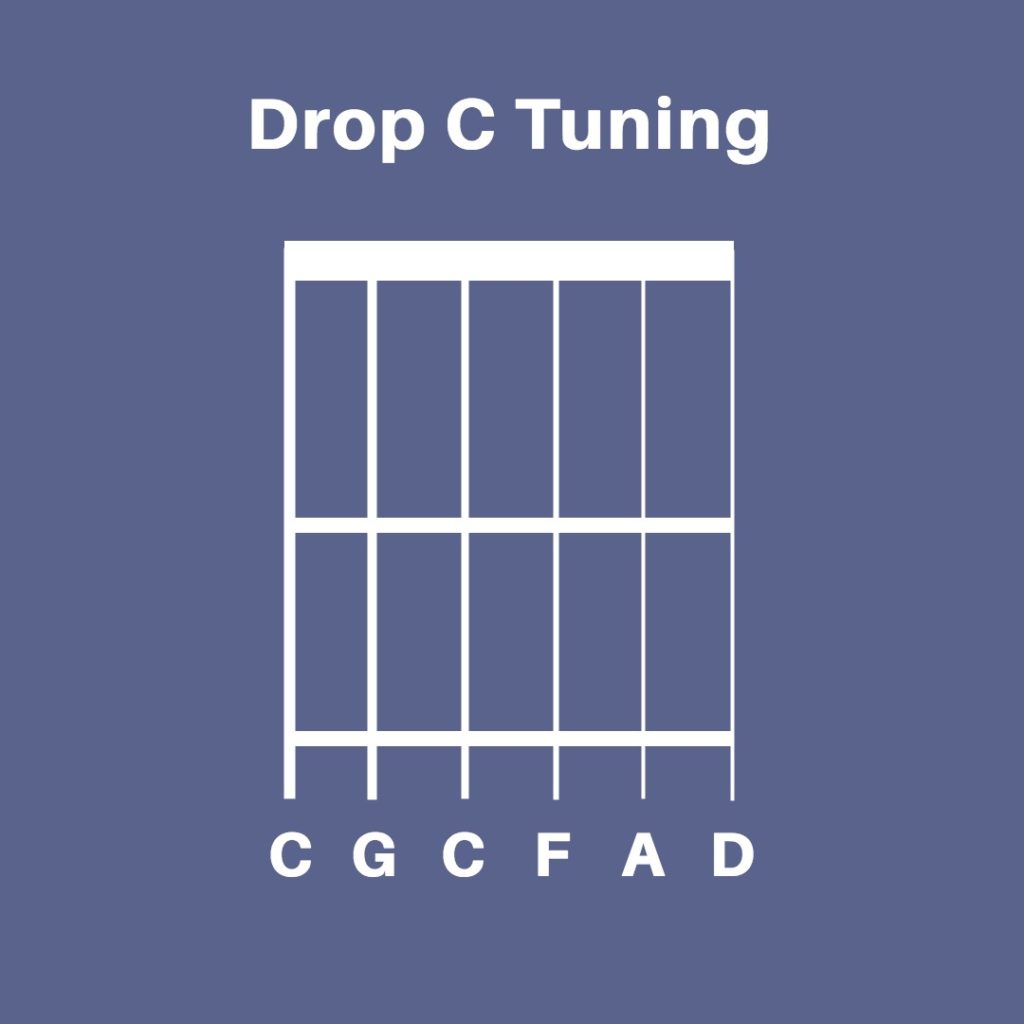
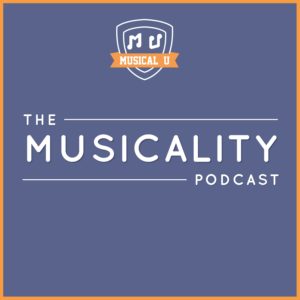 … and a whole bunch more which I would love to announce – but we have to keep some surprises in store! 😉
… and a whole bunch more which I would love to announce – but we have to keep some surprises in store! 😉